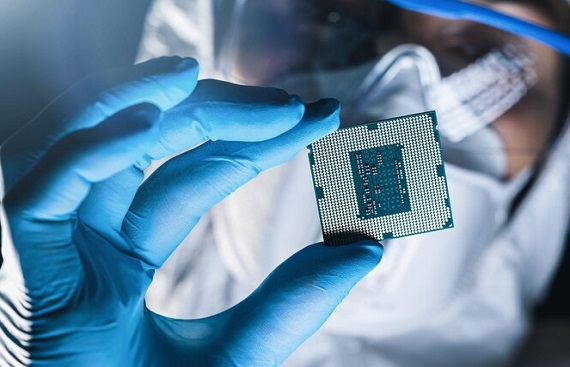The Role of Semiconductors in Energy Transmission and Storage

Energy transmission and storage have always been critical components of modern society's infrastructure. As the world grapples with increasing energy demands and the imperative to transition to cleaner, more sustainable energy sources, superconductors have emerged as a groundbreaking technology with the potential to revolutionize these sectors. The concept of superconductivity dates back to 1911 when Dutch physicist Heike Kamerlingh Onnes first discovered it. He observed that certain materials, when cooled to extremely low temperatures, displayed the astonishing property of zero electrical resistance. This phenomenon marked a watershed moment in the field of physics and laid the foundation for the development of superconducting technologies. For many decades, superconductors were confined to the realm of laboratory curiosities, as the need for temperatures close to absolute zero (-273.15°C or -459.67°F) for their operation limited practical applications. Nonetheless, scientific curiosity persisted, and research continued to uncover new superconducting materials and mechanisms.
India's Semiconductor Industry A Vision for Growth
India's semiconductor industry is poised for a remarkable transformation, driven by a strategic vision to establish itself as a global powerhouse in semiconductor manufacturing and innovation. This ambitious journey will create a demand for 12 lakh (1.2 million) jobs across the sector, spanning manufacturing and design functions. A significant portion of this demand is concentrated in the chip design sector, which alone requires 2,75,000 personnel with a diverse range of qualifications. A key strength for India in this endeavor lies in its vast pool of engineering talent. With more than half a million engineering students graduating each year, India possesses a unique advantage in nurturing the talent essential for fueling the semiconductor industry's growth. This rich talent pool forms the cornerstone of India's journey towards self-reliance and technological innovation. The scope of India's semiconductor foray extends to various sectors, including automotive, telecom, and medical devices. While the initial focus is on meeting current demands, the broader objective is to prepare for the future. This endeavor aligns closely with India's 'Make in India' and 'Atmanirbhar Bharat' vision, fostering economic growth and strategic autonomy.
Driving this transformative initiative is a coalition of key players, including the Ministry of Electronics and IT, India Semiconductor Mission, ISA, IGSS Ventures, and the Vedanta-Foxconn JV. The success of this collaboration is pivotal in executing India's semiconductor plans and building a robust industry. To fortify its position, India is focusing on talent development, planning to train 85,000 engineers and skilled workers to support the semiconductor ecosystem. Initiatives like 'Chips to Startup' underline the importance of investing in human capital for India's technological future. Furthermore, India is fostering innovation and research through initiatives like the Semiconductor Laboratory (SCL), Institute of Semiconductors Technology (IST), and Centers of Excellence.
Dr. Hareesh Chandrasekar, Co-Founder & CEO of Agnit Semiconductors says, “Semiconductor companies are at the forefront of technological innovation, producing the building blocks that power many of the devices people rely on every day. These companies design and manufacture microchips, which are essential components in electronic devices such as smartphones, laptops, televisions, and gaming consoles. The demand for semiconductors rises in tandem with the demand for these electronic devices. In addition to consumer electronics, semiconductors are also used in a wide range of industries, including healthcare, transportation energy and manufacturing. AGNIT Semiconductors is a pioneering technology startup in India that specializes in the development and production of Gallium Nitride (GaN) semiconductors. GaN technology has several advantages over traditional silicon-based semiconductors, including higher efficiency, faster switching speeds, and the ability to operate at higher temperatures and voltages”.
A Path to Global Integration and Technological Leadership
India's comprehensive approach also involves domestically manufacturing semiconductor materials like silicon wafers, gases, and chemicals. This strategy enhances self-reliance and secures the supply chain for India's technological future, aligning with the country's broader economic and geopolitical objectives. India's proactive approach is not limited to domestic efforts. The country is partnering with like-minded nations in initiatives like the Supply Chain Resilient Initiative (SCRI) and joining the Indo-Pacific Economic Framework (IPEF) to diversify supply chains away from China.
Investing in India's semiconductor industry is not just a financial transaction; it's a bet on a nation determined to rise as a semiconductor superpower. India's journey, while filled with challenges, is also abundant with opportunities. As it invests in its semiconductor ecosystem, India is building a foundation for a future where it's not just a consumer of technology but a creator and innovator. With a semiconductor industry valued at USD 27 billion in 2022 and a growing domestic market, India's semiconductor market is projected to reach USD 55 billion by 2026. The global demand for semiconductors is also set to grow significantly, and India is positioning itself to be a reliable and self-sufficient destination in semiconductor manufacturing.
As the US and the EU also accelerate their semiconductor production, India has the opportunity to integrate into the global semiconductor value chain. The establishment of Outsourced Semiconductor Assembly and Test (OSAT) facilities can further leverage India's role in the industry. India's strong R&D landscape, with numerous major semiconductor enterprises setting up bases in the country, is expected to generate 250,000 new jobs in the semiconductor industry across R&D, manufacturing, and other enabling sectors. Skill development and re-skilling initiatives will be crucial to building a comprehensive R&D ecosystem.
We can conclude that India's semiconductor industry is on the brink of a remarkable transformation. With a strategic vision, government support, a wealth of talent, and global collaborations, India is set to secure its place as a global powerhouse in semiconductor manufacturing and innovation. This journey reflects India's unwavering commitment to technological empowerment, economic growth, and environmental sustainability.
